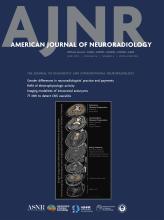Case of the Week
Section Editors: Matylda Machnowska1 and Anvita Pauranik2
1University of Toronto, Toronto, Ontario, Canada
2BC Children's Hospital, University of British Columbia, Vancouver, British Columbia, Canada
Sign up to receive an email alert when a new Case of the Week is posted.
April 19, 2018
Complete Carotid Artery Agenesis
- Background:
-
Congenital agenesis/aplasia of the common carotid artery (CCA) occurs as a result of an abnormality in the differentiation of the third branchial arch.
-
It is a rare, congenital, vascular malformation that has been described in fewer than 25 reported cases. Furthermore, concurrent absence of the external carotid artery (ECA) and internal carotid artery (ICA) is extremely rare and only described in a handful of cases, as the development of the ICA depends from de first (I) to third (III) aortic arches.
-
In most patients with a congenitally absent CCA, the ICA and ECA typically arise independently from the aortic arch or its branches.
-
- Clinical Presentation:
-
Agenesis/aplasia of the CCA is typically an incidental radiographic finding, while hypoplasia of the CCA is more likely to have a symptomatic presentation.
-
There is an association with aortic arch abnormalities.
-
Patients are at an increased risk for transient ischemic attacks, hemiplegia, hemorrhagic/ischemic stroke, and arterial aneurysms.
-
- Key Diagnostic Features:
-
Collateral arterio-arterial anastomosis is demonstrated most frequently via the circle of Willis and in the neck region. Less commonly, persistent embryonic vessels (eg, trigeminal artery, primitive maxillary artery) and/or facial region contralateral anastomosis from the external carotid circulation provide collateral flow.
-
The absence of the carotid canal can help confirm a developmental anomaly rather than an acquired occlusion.
-
- Differential Diagnoses:
-
Chronic occlusion of the CCA can mimic congenital absence of the CCA and can be due to chronic dissection, thromboembolic disease, or fibromuscular dysplasia. The presence of an arterial remnant with no luminal opacification or any parietal calcifications is diagnostic of an acquired occlusion.
-
- Treatment:
- No treatment needed
- Given the anatomic configuration, these patients are prone to developing contralateral intracranial saccular aneurysms, and contralateral arterial dissections and thrombotic or embolic occlusions may have catastrophic outcomes.











